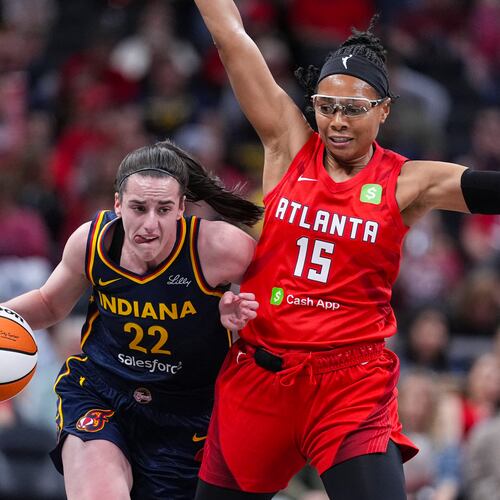Bobby Jones used a hickory shafted “Calamity Jane” putter in 1930 to win the Grand Slam trophies on display this week at East Lake Golf Club.
Eighty years later, modern clubs bearing his name not only are made of space-age metal, but also sold through infomercials starring a Basque clubmaker/engineer with his own fans.
Jesse Ortiz represents one answer to the challenge of marketing and selling sports equipment in an era where technology, media and Wall Street give golfers a constantly changing stream of choices.
At stake for any player is the right club, which Jones said eliminates “one difficulty from those which are already too many" in golf.
At stake for manufacturers: Americans spent between $3 billion and $4 billion on golf equipment and apparel in 2009, according to the National Golf Foundation.
Enter Ortiz, who has packaged his heritage in golf-club design with a knack for explaining engineering simply to a faceless camera.
“I like to break it down to the simple fact that we make these sticks to hit a ball into a little hole,” Ortiz said. “We’re not curing cancer.”
Ortiz scored on cable first in the 1990s with his Trimetal fairway woods. Since 2007 the Golf Channel has been running three of his Bobby Jones programs.
“He’s magnetic,” said Jeff Harvey, a 5-handicap player from Buckhead, who spent 30 minutes talking with Ortiz on Thursday night about old persimmon clubs and more. The H. Stockton men's clothing store near Perimeter Mall, which sells Bobby Jones apparel, sponsored the meet and greet.
“On TV you can tell that off the top of his head he knows specifics about clubs, and he is just enthusiastic and knowledgeable. People are drawn to him. ... For a golf enthusiast, [meeting him] is like a dream to come true.”
In the crowded field of golf sales, Ortiz took Bobby Jones to cable because their single products -- a hybrid fairway metal, a wedge, etc. -- and smaller batches don’t fit into big-box stores and pro shops.
In the past 30 years, more golf-club manufacturers have gone public or been bought by public companies. Wall Street has poured more money into research and development and manufacturing, to push out more new clubs. The benefit to the golf public is cutting-edge technology delivered sooner, NGF senior vice president Greg Nathan said.
“The Bobby Jones product lines [are] narrower, versus one with more pressure to make more product more often,” Nathan said.
To reach golfers who think outside that box, Ortiz turned to the TV box.
“People think an infomercial is something that is informal, cold, mass-produced, selling products that are mass-produced, cold and distant -- a huckster-type of thing,” Ortiz said.
“And golf isn’t like that. It’s completely the opposite. ... Golf clubs are still very personal. [Golfers] want to touch and feel.”
To bridge the distance, he weaves in old footage of Bobby Jones -- and turns on the family charm.
His dad, Lou Ortiz, brought a gift for storytelling from the Spanish Pyrenees, and made clubs for and friends with Ken Venturi and other Tour pros.
“His heavy accent helped, too," Ortiz said. "He could read a phone book and everyone would say how romantic it was.”
Ortiz calls his fans aficionados, Spanish for "amateur" and "affectionate one." When one stumps customer service, Ortiz often gets on the line.
He doesn’t mind comparisons to Billy Mays, the late cable pitchman extraordinaire.
“I thought he was perfect for what he was selling,” Ortiz said. “He came across really passionate about his product. ... Anyone can be on TV if you write the check , but you only stay out there if the product works as advertised.”
For aficionado Harvey, who is considering buying his first Bobby Jones hybrid, the combination of the Jones legacy fits an infomercial. In Hollywood, Jones filmed golf newsreels to bring the sport to the masses. "I think he'd embrace this," Harvey said.
About the Author
Keep Reading
The Latest
Featured

